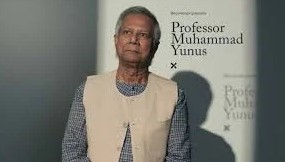External Affairs Minister S Jaishankar emphasised the
significance of the bilateral relationship between India and Bangladesh,
labelling it as a “model relationship” in the Indian subcontinent.
The EAM’s comments came in response to a question
posed by Saida Muna Tasneem, Bangladesh’s High Commissioner to the UK, during a
conversation hosted by the High Commission of India in London, titled “How a
billion people see the world.”
The conversation took place at the Royal Over-Seas
League Club and was moderated by journalist Lionel Barber.
“I wanted to ask you that how important or integral
Bangladesh is in India’s foreign policy, particularly in pursuing its security,
regional connectivity, shared prosperity,” questioned Saida Muna Tasneem.
In response, Jaishankar highlighted the collaborative
efforts in restructuring the neighbourhood, citing substantial achievements in
resolving territorial disputes.
“We have settled our land boundary with Bangladesh,
which is really a very big deal. We had differences on our maritime boundary.
We went for arbitration. So, at the very least, it’s a very good example to
some other regions and countries,” noted Jaishankar, emphasising the commitment
to diplomatic solutions.
The EAM also acknowledged the transformative changes
over the past decade, citing the inauguration of two rail lines and a power
plant connecting India and Bangladesh.
The strategic use of Bangladeshi ports for India’s
northeast and the mutual benefits of energy supplies through pipelines further
exemplify the depth of the relationship.
“In the last ten years, we’ve had two rail lines
between India and Bangladesh which were inaugurated. A power plant which was
inaugurated today. We are using Bangladeshi ports for our northeast. They are
benefiting by more traffic coming through the ports,” Jaishankar added.
“So actually, today, India-Bangladesh relations stand
out in the Indian subcontinent as a model relationship in terms of benefits of
regional cooperation,” he said.
The External Affairs Minister earlier mentioned “excessive
disruption,” which he said were needed to managed and handled skilfully.
In the discussion, Jaishankar also highlighted India’s
nuanced approach to disruptions, emphasising the need for skilful management.
Reflecting on a historical disruption, he noted,
“In my previous remark, I used the adjective excessive
disruption, so even disruptions need to be managed and handled with a certain
amount of skill. But the answer is yes…1971 was a disruption.”
Jaishankar delved into the impact of the 1971
disruption, emphasising its role in revealing the untenability of the partition
outcome and reshaping the subcontinent. He articulated, “It took a partitioned
subcontinent and brought out the untenability of the outcome of the partition
and really created a different construct in the subcontinent.”
Jaishankar also noted the economic progress of what
was then considered the less developed part of Pakistan, East Pakistan (now
Bangladesh).
He said, “Interestingly, what was then the poorer
part, the less developed part of Pakistan (East Pakistan, now Bangladesh), has
actually done much better economically.”
This acknowledgement highlights the positive economic
trajectory of Bangladesh since the historical events of 1971.
The 1971 India-Pakistan War, which ended with the
largest military surrender where more than 90,000 soldiers of the Pakistan Army
surrendered was the decisive victory secured by the Indian Armed Forces in 1971
leading to the creation of Bangladesh.
In one of the fastest and shortest campaigns of
military history, a new nation was born as a result of the swift campaign
undertaken by the Indian Army.
After facing defeat in the 1971 war, the then Army
Chief of Pakistan General Amir Abdullah Khan Niazi, along with his 93,000
troops, surrendered to allied forces which also comprised of Indian Army
personnel.
Vijay Diwas is celebrated every year on December 16 to
mark India’s triumph in liberating Bangladesh from Pakistan in 1971.
ANI
















